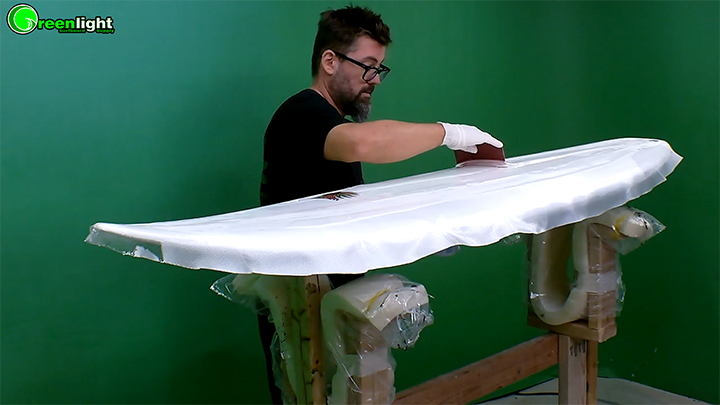
Fiberglassing with Epoxy Resin
Surfboard fiberglassing with epoxy resin is a popular method for creating a durable, lightweight, and high-performance surfboard. The process involves applying layers of fiberglass cloth and epoxy resin to the surfboard's foam core, creating a strong and stiff structure that can withstand the rigors of surfing.
Fiberglass cloth is made from very thin fibers of glass that are woven together to create a fabric-like material. The fibers in the cloth are aligned in the direction of the intended strength, typically the lengthwise direction of the board. The cloth comes in different widths and thicknesses, and the type of cloth used will depend on the specific requirements of the surfboard.
Once the fiberglass cloth is in place, it's time to apply the epoxy resin. Epoxy resin is a two-part adhesive that, when mixed together, creates a strong and durable bond. The epoxy resin is poured onto the fiberglass cloth and then spread evenly with a spreader. It's important to work quickly while spreading the epoxy, as it begins to harden as soon as the two parts are mixed.
After the epoxy has been applied, the surfboard is left to cure. The initial curing process can take anywhere from 1 to 4 hours, depending on the speed of the hardener, ambient temperature and humidity. After the initial cure stage the surfboard can be handled and has reached approximately 85% of its full strength. After 7 days the resin "creeps" to full cure.
One of the benefits of fiberglassing with epoxy resin is that the surfboard will be much stronger and more durable than if it were made with traditional polyester resin. Epoxy resin is more resistant to impact and abrasion, making it a better choice for surfboards that will be used in heavy surf or rocky conditions. Additionally, epoxy resin is more environmentally friendly than polyester resin, as it produces fewer emissions and is less toxic.
Another advantage of using epoxy resin is that it is more UV resistant and does not yellow over time like polyester resin. This means that the surfboard will retain its original color and finish for a longer period of time.
It is also worth mentioning that epoxy resin is more expensive than polyester resin, so the cost of materials will be higher. BUT less epoxy resin is needed to fiberglass the board to the cost difference is minimal. That being said, the benefits of epoxy resin generally outweigh the additional cost.
In conclusion, surfboard fiberglassing with epoxy resin is a popular and effective method for creating a durable, lightweight, and high-performance surfboard. The process involves applying layers of fiberglass cloth and epoxy resin to the foam core of the surfboard, creating a strong and stiff structure that can withstand the rigors of surfing. Epoxy resin is more resistant to impact and abrasion than traditional polyester resin, and is also more environmentally friendly. The cost of materials may be higher, but the benefits of epoxy resin generally outweigh the additional cost.
